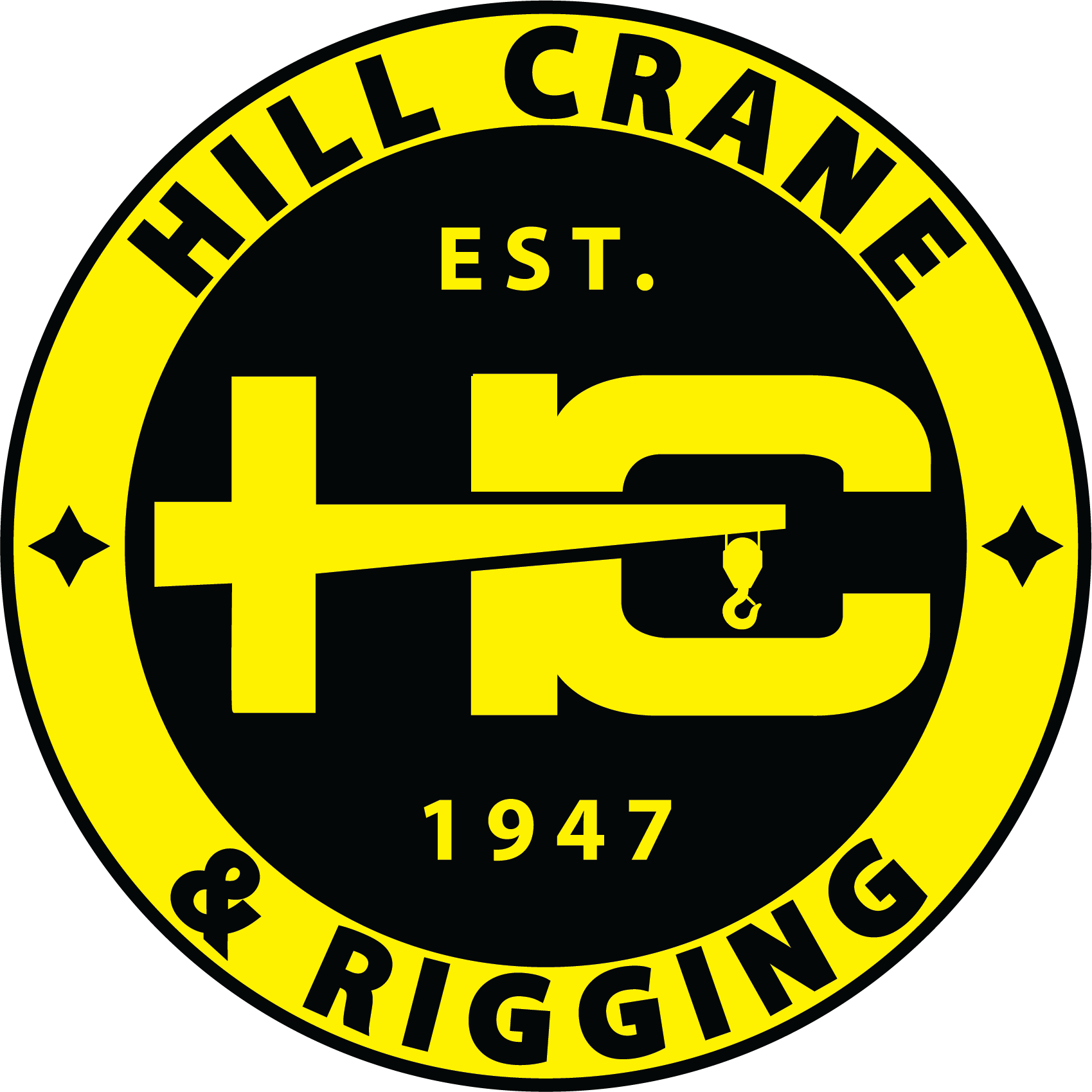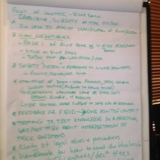Information
-
Audit Title
-
Document No.
-
Client / Site
-
Conducted on
-
Prepared by
-
Location
-
Personnel
3.0 Scope
3.0.1
-
Ask staff and contractors if this FPE applies to all mobile equipment and vehicles or are there exceptions.
-
Ask contractors if this FPE is included in their contract. Check their understanding of requirements.
3.0.2
-
Ask drivers, operators if the requirements of this FPE apply to them. If yes check their understanding.
-
Ask operators of vehicles used outside if this FPE applies to their operations. Observe the condition of their vehicles. Ask to see inspection checklists.
4.0 Accountability
-
Ask for the people who have been formally appointed to be available for the audit.
-
Are they aware of their appointment
-
Are they able to explain and show the auditors how the requirements they are accountable for are implemented and maintained?<br>
4.1 Hazard identification risk assessment and control
4.1.1
-
Check the list of vehicles on the risk assessment with the vehicles currently on site.<br>
-
Verify that all operational areas have been assessed.<br>
4.1.2
-
Verify that vehicles/mobile equipment used on site are compliant with local regulations.
-
Observe traffic at different locations and evaluate if compliance has been achieved in practice.
-
Observe pedestrian and vehicle interactions. Are they compliant?
-
Ask how the general operating requirements are enforced.
-
Ask drivers/operators their understanding of the general operating requirements.
-
Ask to see any incident reports on breaches of the general operating requirements.
4.1.3
-
Ask to be taken to equipment requiring high skill.<br>
-
Ask the operator what procedures must the follow.
-
Ask where the procedures are located, are they accessible to all relevant parties?
-
Ask the operator what tests they had to pass in order to operate the equipment in this area.
-
Ask any helpers/spotters about the requirements of this FPE.
-
Ask operators of vehicles used for emergency response purpose what if any special training or procedures they have received.
-
Ask to see weighbridge certificates for a number of trucks. Validate compliance with acceptable load limits
4.2 Selection, Training, Competency and Authorisation
4.2.1
-
Ask how is medical fitness verified, specific emphasis on aspects of fitness which may inhibit the safe operation i.e. vision.
-
Ask drivers/operators what licenses they require to operate vehicles/equipment.
-
Identify requirements for a number of types of vehicles and test compliance in the field.
-
Sight driver and operators licences.
-
Ask drivers and operators when they were last assessed.<br>
4.2.2
-
Speak to personnel who are identified as trainers. Ask them to explain the process they went thorough to become authorized trainers<br>
-
Ask trainers what experience they have in operating the equipment they train on. Does the level of experience match requirements?
4.2.3
-
Ask personnel authorised to performing maintenance activities on brakes, steering, suspension what competency requirements they had to meet to be authorised to do this work. Does this match the element requirements?<br>
-
Observe personnel performing work on steering, brakes and suspension if possible; ask these people what qualification they have to perform the task.
4.2.3
-
Ask operators how safe operating techniques are reinforced.
-
Ask operators to conduct a pre-operation inspection correctly.
-
Ask operators to explain what they are required to do when their equipment breaks down.<br>
-
Select a number of different pieces of mobile equipment and ask operators to describe the limitations of the equipment.
-
Observe the equipment operating for compliance and demonstrated operator skill.
4.2.4
-
Observe operator practice in hazardous and or restricted areas. Does it match requirements
-
Ask a selected number of drivers/operators for their understanding of fatigue management.
4.2.5
-
Observe assistants/spotters in the field. Do they know and use the standard hand signals? Ask them to demonstrate
-
Are they wearing high visibility clothing?
-
Are they able to describe the vision limitations of the equipment they are helping/spotting?
4.2.6
-
Ask operators to produce licences/authorization for the equipment they are operating.
4.2.7
-
Select a number of drivers/operators from different areas and ask to see their records.
-
Are the records up to date? Can they be found?
4.2.8
-
Ask personnel who have completed the general induction if this FPE was covered in the induction and what if anything they can recall.
4.3 Communication and awareness
4.3.1
-
Ask both supervision and operators how are awareness and/or instruction activities managed? Evaluate if it is effective.
-
Are topics relating to the operation of vehicles and mobile equipment included in safety meetings / toolbox talks? Are drivers/operators able to recall these?<br>
-
Ask personnel if they are provided with adequate instructions prior to commencing tasks?
-
Do personnel have a level of awareness of risks relative to their exposure / role I.e. fatigue issues?
4.3.2
-
Verify in the field a documented change.<br>
-
Ask personnel if they are informed of changes to vehicles and mobile equipment, operational requirements, or road traffic rules.<br>
4.4 Design, Purchase, Fabrication, Installation and Commissioning
4.4.1
-
Are design, construction and maintenance personnel aware of the road design specifications?
-
Does the overall condition of roads and intersections indicate that road design specifications are being adhered to?<br>
-
Is the road adequate for the traffic volume?
-
Is there adequate separation of vehicles and people
-
Are roads free draining
-
Are mandatory and advisory traffic control signs in place?
-
Are traffic signs in good condition and visible at a distance?
-
Are the traffic signs being obeyed?
-
Are parking areas clearly indicated and set out as specified?
4.4.2
-
Does the layout separate people and vehicles as much as is practicable?
-
Observe vehicles movements in relation to personnel in the area, is their restricted or no go areas at the loading point for to personnel and are these followed?<br>
-
Is lighting adequate in loading areas?<br>
-
Is traffic management plan being followed?
4.4.3
-
Are quarry personnel aware of the road design specifications?<br> <br>
-
Consider the haulage unit sizes using quarry roads and the interaction with other vehicles at loading points, intersections dumping points (crusher, waste dump, stockpiles etc.).
-
Does the overall condition of the quarry roads and intersections indicate that quarry road design specifications are being adhered to?
4.4.4.a
-
Examine the vehicle fleet. Are vehicles and mobile equipment purchased in accordance with the specifications in this Element Requirement?
-
Are 3 point seatbelts fitted for all passengers
-
Are tray back vehicles fitted as required when used to transport people?<br>
4.4.4.b
-
Inspect busses used to transport company and contractor personnel. Do they meet the specification for now?
-
Check personnel are wearing seatbelts as required
4.4.4.c
-
Check newly purchased vehicles of both company and contractors. Do they meet or exceed the specification?
4.4.4.d
-
Verify that vehicles identified to have IVMS/VDR fitted have been.<br>
-
Verify that the data from the IVMS/VDR is being evaluated and corrective action taken
-
Ask to be shown newly purchased mobile equipment
-
Does it comply with requirements of this and other FPE’s e.g. Work at height?
4.4.6
-
Are Quarry vehicles fitted as required?
4.4.7
-
How are vehicles which have been approved to operate that the operation/facility identified i.e. local sticker, registration number etc.?
-
Select a number of vehicles/mobile equipment on the approved list and validate compliance in the field.
-
Select a number of vehicles/mobile equipment in the field and ask to see their periodic inspection. Does the condition of the equipment match?
4.5 Work method and condition control
-
Ask driver to perform pre-operation inspection. Are they confident and able to complete correctly and quickly?
-
Do drivers /operators hold the appropriate Licence?
-
Ask drivers /operators what they know about the wearing of seatbelts, or approaching mobile equipment t? Do they comply?<br>
-
Ask drivers /operators aware what interactions may occur?
-
Ask drivers /operators what are the considerations for interactions with personnel? Do they know the blind spots on their vehicles?
-
Do drivers no how to secure the load?
-
Do drivers know the acceptable GVM for their Vehicle?<br>
-
Do drivers, spotters, helpers and road workers wear high Visibility clothing.
4.6 Maintenance
-
Ask the maintenance staff about the maintenance program. Does it comply with the element requirements?
-
Ask to be shown how are records maintained?
-
Is there a way of checking on the vehicles if the maintenance schedules being adhered to?
-
Are appropriate records kept?
-
What is the general condition of vehicles and mobile equipment e.g. do they reflect that maintenance is being performed as required?
-
Ask to be shown how contractors and hire equipment maintenance programs being applied for their vehicles and mobile equipment.<br>
4.7 Emergency control
4.7.1
-
Do personnel know the remote area and or emergency response procedure?
-
Check selected vehicles for first aid kit and status.
-
Does the operation or facility have the equipment to recover a person from a vehicle incident involving heavy mobile equipment (cut a person from a ROPS cabin)?
-
Does the emergency response for offsite incidents cover all area where company drivers operate including identifying closest medical facilities?
4.7.2
-
Is the signage used to meet the standards of the country?
-
Does each vehicle carry the correct fire extinguisher for its load capacity?
-
How does the operation/facility ensure it complies with the permit requirements, including any service which has been contracted and the contractor holds the permit?<br>Check in the field if possible.
4.8 Monitoring, inspection and audits
4.8.1
-
Ask to see the road inspection process being applied.
-
Ask to see records of inspections conducted in last 6 months.
-
How well do the road inspectors understand the inspection requirements?<br>
-
Review the quality of inspection records.
-
Check the condition of roads. Are there any non-conformances that indicate the inspection program needs attention?
4.8.2
-
Observe a range of specific checklists being applied in the field.<br><br>
-
Ask to see a number of inspections from 3 months ago.<br>
-
How well do personnel understand the inspection requirements for vehicles and mobile equipment?
-
Review the quality of inspection records.<br>
-
Check the general condition of vehicles and mobile equipment. Are there any non-conformances that indicate the inspection program needs attention?<br>Are defects reported?
-
Is unsafe equipment stood down?
4.8.3
-
Observe safety Observations may being performed.
-
Review the records of planned task observations. Are they being performed correctly i.e. focus on hazardous tasks/ operational procedures?
-
Are there any trends in the non-conformances identified?
4.8.4
-
Is an auditing program in place, which incorporates these element requirements?
-
Are audits performed in accordance with the audit schedules?
-
Review completed audit reports.
-
Have the audits verified the quality and effectiveness of the requirements set out in this element?
4.9 Reporting, assessment and corrective actions
4.9.1
-
Are speed limits and traffic rules observed/followed?<br>
-
Are speed limits and traffic rules enforced?
-
Are speed limits and traffic rules relevant to conditions?
4.9.2
-
Ask personnel what sort of road hazards or defects must be reported/<br>
-
Ask employees what sort of defect would require a vehicle to be stood down.
-
Check a sample of vehicles and mobile equipment. Does the condition indicate hazards or defects are not being reported and/or corrected?
-
Are road hazards or defects reported, assessed, recorded and corrected?
-
Review records of hazard / defect reports and the associated corrective actions. Are corrective actions being implemented promptly?
Conclusion and auditor's comments
-
Date of audit completed
-
Signature of auditor
-
Date of auditor's signature
-
Signature of auditee
-
Date of auditee's signature












